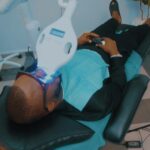Massage therapy is more than just a skill; it’s an art backed by scientific knowledge and practical training. For aspiring licensed massage therapists, the path is an exciting blend of classroom learning, hands-on experience, and personal development. But what does a typical day look like when you’re a massage therapy student?
This blog dives into the student experience, offering a detailed glimpse into the daily routine, challenges, and triumphs of those pursuing their massage training. Whether you’re considering enrolling or simply curious about the process, this guide will provide insight into what it takes to earn a massage therapy license and thrive in the field.
The Student Experience in Massage Training
The life of a massage therapy student is a mix of structure, learning, and discovery. Here’s how a typical day might unfold, broken down into three major components:
1. Morning Anatomy and Classroom Learning
The day often begins in a traditional classroom setting. Students spend these early hours absorbing the theoretical framework that supports massage practices.
Morning Focus Areas:
- Anatomy lessons: Understanding muscular structures, bones, and their role in body movement.
- Theory exploration: Studying the physiological and psychological benefits of massage therapy.
- Techniques breakdown: Learning specific massage methods, from Swedish to deep tissue.
These sessions not only provide essential knowledge but also build confidence for hands-on application later in the day. Students often engage in group discussions or small quizzes to reinforce their understanding of the material.
2. Transitioning from Theory to Practice
The transition from lectures to practical learning is where things truly come to life. Training facilities often have fully equipped massage therapy labs where classroom learning is put into practice.
Hands-on Training Highlights:
- Practicing hand movements and pressure techniques on mannequins or partners.
- Receiving feedback on posture and ergonomics to avoid strain as a massage therapist.
- Experiment with applications based on case scenarios, such as managing muscle tension or stress relief.
Here’s a student insight shared by Maxine, a current massage therapy student, “The hands-on experience is where I’ve learned the most. It’s one thing to understand the technique on paper but another to perform it. My instructors ensure we feel confident before working with real-world clients.”
3. Afternoon Clinical Practice
Most massage training programs integrate clinical practice into their schedules, often in the program’s later stages. These clinics allow students to work with real clients under supervision.
Key Benefits of Clinical Practicum:
- Improving communication skills by discussing clients’ needs and expectations.
- Preparing treatment plans based on client assessments.
- Gaining experience with a variety of clients, from office workers with back pain to athletes needing recovery sessions.
Clients often leave feedback, helping students refine their techniques and adjust their approaches. “Being in the clinic gave me a taste of what it’s truly like to manage clients,” says Jordan, a recent massage school graduate.
What Else Fills a Massage Student’s Day?
- Homework and Assignments: Expect assignments centered on anatomy or case studies that enhance retention.
- Study Groups: Many students find value in collaborating with their peers to tackle complex topics like reflexology or kinesiology.
- Professional Prep: Some schools offer workshops to prepare students for their eventual massage therapy license exam.
Why Massage Training Is Worth the Commitment
Becoming a massage therapist requires dedication, but the rewards are immense. Here are a few benefits of completing this training path.
- Job Satisfaction: Therapists consistently rate their career satisfaction high, thanks to the personal impact they have on clients.
- Flexibility: Professionals often enjoy flexible working hours, with opportunities ranging from spas to private practices.
- Growth Opportunities: The demand for skilled massage therapists continues to grow.
- Community Connection: Many programs foster a strong sense of camaraderie among students, creating a supportive community for lifelong learning.
It’s a career where passion meets purpose, allowing you to create physical and emotional well-being for others.
Final Thoughts for Aspiring Massage Therapists
Life as a massage student is a rewarding combination of structured learning and practical experience. From anatomy lectures and technique training to real-world clinical applications, every day is structured to help students develop their skills and prepare for a successful career.
If you’re ready to start your massage training and take steps toward earning your massage therapy license, now is the time. Begin your educational journey and turn your passion for wellness into a thriving career.












